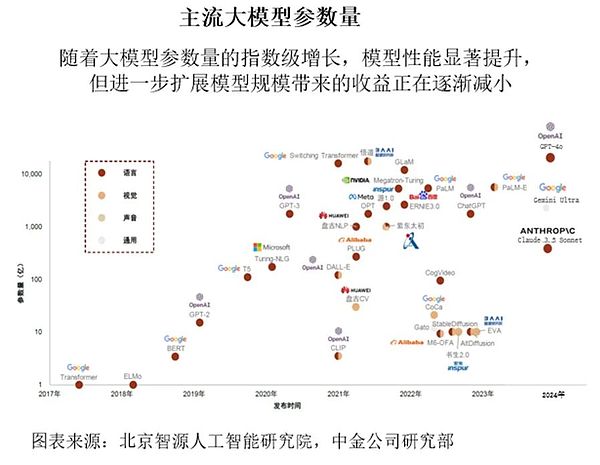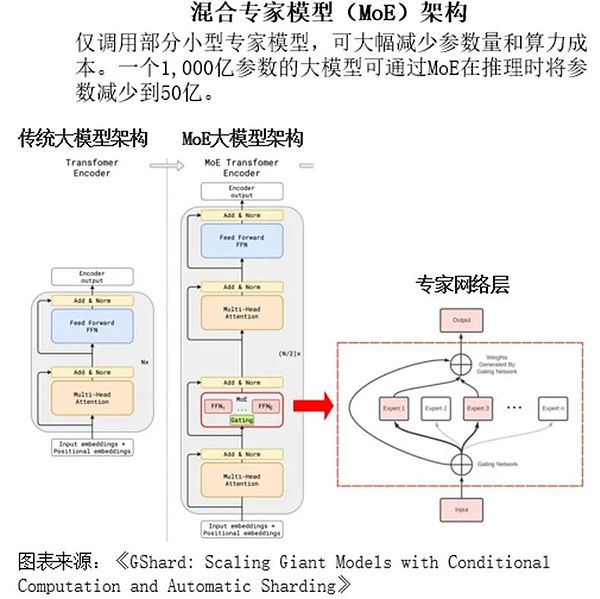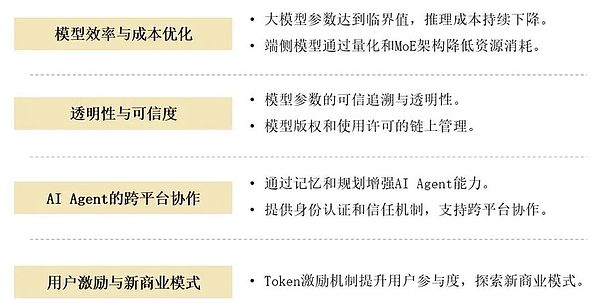Introduction
In the digital age, artificial intelligence (AI) has become a key force driving technological innovation and social progress. The development of AI is not only a technological advancement, but also an extension of human wisdom. AI has been the hottest topic in the venture capital industry and capital markets in the past period of time.
With the development of blockchain technology, decentralized AI (Decentralized AI) has emerged. This article will explain to you the definition and architecture of decentralized AI and how it works with the artificial intelligence industry.
Definition and Architecture of Decentralized AI

Decentralized AI uses decentralized computing resources and data storage to train and use AI models in a distributed manner to enhance privacy and security. Its four-layer architecture includes:
• Model layer:Support decentralized AI model development, sharing and trading, and promote global collaboration and innovation. Representative projects at this level include Bittensor, which uses blockchain technology to create a global AI model sharing and collaboration platform.
• Training layer:Use smart contracts and decentralized technology to reduce the cost of AI model training and simplify the process to improve training efficiency. The challenge at this level is how to effectively use distributed computing resources for efficient model training.
• Data layer:Use blockchain technology to store and manage data, ensuring the security and immutability of data, while giving users full control over the data. Applications at this level include decentralized data markets, which use blockchain technology to achieve transparent transactions and ownership confirmation of data.
• Computing power layer: Through decentralized GPU computing power platform and bandwidth support, distributed computing resources are provided to support efficient training and reasoning of AI models. Technological advances at this level, such as edge computing and distributed GPU networks, provide new solutions for the training and reasoning of AI models.
Decentralized AI representative projects

Decentralized AI industry review: model layer
Model layer: The number of large model parameters increases exponentially, and the model performance is significantly improved, but the benefits of further expanding the model scale are gradually decreasing. This trend requires us to rethink the development direction of AI models and how to reduce costs and resource consumption while maintaining performance.

The development of large AI models follows the "law of scale", that is, there is a certain relationship between model performance and parameter scale, data set size and computational effort.

When the model is expanded to a certain scale, its performance in specific tasks will suddenly improve significantly. As the number of parameters in large models increases, the improvement in model performance gradually decreases. How to balance parameter scale and model performance will be the key to future development.

We have seen that the price competition for APIs of large AI models has intensified, and many manufacturers have cut prices to increase their market share. However, with the homogenization of large model performance, the sustainability of API revenue is also questioned. How to maintain high user stickiness and increase revenue will be a major challenge in the future.


The application of end-side models will be achieved by reducing data precision and adopting a mixed expert model (MoE) architecture. Model quantization technology can compress 32-bit floating-point data into 8 bits, thereby significantly reducing model size and memory consumption. In this way, the model can run efficiently on the end-side device, promoting the further popularization of AI technology.

Summary: Blockchain helps the model layer to improve the transparency, collaboration and user participation of AI models.

Centralized AI industry review: training layer
Training layer:Large model training requires high bandwidth and low-latency communication, and it is possible to use a decentralized computing network to try large models. The challenge at this level is how to optimize the allocation of communication and computing resources to achieve more efficient model training.

Decentralized computing networks have certain potential in large model training. Despite the challenge of excessive communication overhead, the training efficiency can be significantly improved by optimizing the scheduling algorithm and compressing the amount of transmitted data. However, how to overcome network latency and data transmission bottlenecks in actual environments is still the main problem facing decentralized training.

In order to solve the bottleneck of large model training in decentralized computing networks, we can use technologies such as data compression, scheduling optimization, and local update and synchronization. These methods can reduce communication overhead, improve training efficiency, and make decentralized computing networks a viable option for large model training.

Zero-knowledge machine learning (zkML) combines zero-knowledge proof and machine learning techniques to allow model verification and reasoning without exposing training data and model details. This technology is particularly suitable for industries with high requirements for data confidentiality, such as medical and financial, and can ensure data privacy while verifying the accuracy and reliability of AI models.

Decentralized AI Industry Review: Data Layer
Data privacy and security have become key issues in the development of AI. Decentralized data storage and processing technology provides new ideas for solving these problems.
Data storage, data indexing, and data application are all key links to ensure the normal operation of decentralized AI systems. Decentralized storage platforms such as Filecoin and Arweave provide new solutions in data security and privacy protection, and reduce storage costs.


Decentralized storage case:


Since 2020, Arweave's data storage scale has grown rapidly, mainly driven by the demand of the NFT market and Web3 applications. Through Arweave, users can achieve decentralized permanent data storage, solving the problem of long-term data storage.
The AO project further enhances the Arweave ecosystem, providing users with more powerful computing power and a wider range of application scenarios.

On this page, we compare two decentralized storage projects, Arweave and Filecoin. Arweave achieves permanent storage through a one-time payment, while Filecoin adopts a monthly payment model and focuses on providing flexible storage services. Both have their own advantages in technical architecture, business scale and market positioning, and users can choose the appropriate solution according to their specific needs.
Decentralized AI Industry Review: Computing Power Layer
Computing Power Layer:As the complexity of AI models increases, the demand for computing resources is also growing. The emergence of decentralized computing power networks provides a new way to allocate resources for the training and reasoning of AI models.


Decentralized computing networks (as well as special computing networks for training and reasoning) are currently the most active and fastest-growing areas in the DeAI track. This is consistent with the fact that infrastructure suppliers in the real world have captured the rich fruits of the AI industry chain. As the shortage of computing resources such as GPUs continues, manufacturers with computing resource hardware equipment have entered this field one after another.

AethirCase:

Business model: bilateral market for computing power leasing
Decentralized computing power market, essentially uses Web3 technology to extend the concept of grid computing to an economically incentivized, trustless environment. By incentivizing resource providers such as CPUs and GPUs to contribute their idle computing power to the decentralized network, a decentralized computing power service market of a certain scale is formed; and connecting the demanders of computing power resources (such as model providers) to provide them with computing power service resources at a lower cost and in a more flexible way. The decentralized computing power market is also a challenge to centralized monopoly cloud service providers.
The decentralized computing power market can be further divided into general-purpose and dedicated types according to the type of service it provides. General-purpose computing networks operate like decentralized clouds, providing computing resources for various applications. Dedicated computing networks are mainly computing networks for specific purposes, tailored for specific use cases. For example, Render Network is a dedicated computing network focused on rendering workloads; Gensyn is a dedicated computing network focused on ML model training; and io.net is an example of a general-purpose computing network.
For DeAI, an important challenge in training models on decentralized infrastructure is the high latency caused by large-scale computing power, bandwidth limitations, and the use of heterogeneous hardware from different suppliers around the world. Therefore, a dedicated AI computing network can provide more AI-adaptive functions than a general-purpose computing network. At present, centralized training of ML models is still the most efficient and stable project, but this places a very high demand on the capital strength of the project party.
Conclusion
Decentralized AI, as an emerging technology trend, is gradually showing its advantages in data privacy, security, and cost-effectiveness. In the next article, we will explore the risks and challenges faced by decentralized AI, as well as the future development direction.
 JinseFinance
JinseFinance
 JinseFinance
JinseFinance JinseFinance
JinseFinance Xu Lin
Xu Lin Edmund
Edmund JinseFinance
JinseFinance YouQuan
YouQuan Olive
Olive Cheng Yuan
Cheng Yuan Catherine
Catherine Catherine
Catherine